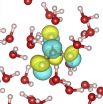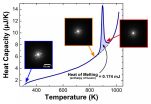(Press-News.org) WORCESTER, MA –Using an innovative exome sequencing strategy, a team of international scientists led by John Landers, PhD, at the University of Massachusetts Medical School has shown that TUBA4A, the gene encoding the Tubulin Alpha 4A protein, is associated with familial amyotrophic lateral sclerosis (ALS), a fatal neurological disorder also known as Lou Gehrig's Disease. Details of the study were published today in Neuron.
Exome sequencing, in contrast to whole genome sequencing, relies on sequencing only the protein-coding genes in a genome and has been an effective and cost-efficient strategy for identifying disease-causing genetic mutations. However, exome sequencing can be limited in its application because all people harbor many rare genetic variants that don't cause disease and are nothing more than normal genetic background noise. Isolating disease-causing genetic variants requires DNA from multiple people in an affected family to be successful. For late-onset diseases such as ALS, finding enough patients to sequence in a single family is not always possible.
To overcome this limitation, Landers and colleagues performed an exome-wide screen on 363 people with familial ALS, each of whom also had a family member with the condition. Researchers performed an analysis of every coding gene in the genome of these patients and then they searched for patterns of rare, damaging mutations that appeared more frequently in patients with ALS than in the general population.
"Every single one of us carries rare mutations which make the identification of disease-associated genes difficult. By analyzing the mutation rate of every gene in our patients and comparing them to the general population, we were able to show that the TUBA4A gene had an elevated frequency of mutation in patients," said Landers, a professor of neurology at UMMS.
Additional testing by Landers and colleagues found that mutation to the TUBA4A gene was, in fact, associated with ALS.
TUBA4A encodes for the Tubulin Alpha 4A protein and is found in all human tissue with its highest levels of expression in the brain. In nerve cells, TUBA4A is responsible for moving vital building blocks from one part of the cell to another. Specifically, TUBA4A helps build the microtubule network, one of the most important structural components of the nerve cell. Landers and colleagues found that the mutated TUBA4A protein is toxic to the neuron by weakening the entire microtubule network.
"This demonstrates the importance of identifying even rare mutations that could cause ALS, as they might point to common pathways that are altered leading to motor neuron death," said Landers. "TUBA4A is one of several cytoskeletal genes that are associated with ALS. This strengthens the thought that the cytoskeleton architecture and dynamics may play a major role in the development of the disease."
ALS is a progressive, neurodegenerative disorder affecting the motor neurons in the central nervous system. As motor neurons die, the brain's ability to send signals to the body's muscles is compromised. This leads to loss of voluntary muscle movement, paralysis and eventually respiratory failure. The cause of most cases of ALS is not known. Approximately 10 percent of cases are inherited. Though investigators at UMMS and elsewhere have identified several genes shown to cause inherited or familial ALS, nearly one-third of these cases have an unknown genetic cause.
"The ongoing efforts from the ALS research community to sequence thousands of patient genomes through large international collaborations such as this will be an invaluable resource to identifying new disease-causing genes and pathways that could potentially be targeted for therapeutic intervention," said Landers.
INFORMATION:
Link to video: http://youtu.be/d1rCjNSNiI0
The Bureau of Reclamation has released a report summarizing six years of testing coatings to control the attachment of quagga and zebra mussels to water and power facilities. Since the study began in 2008, Reclamation has tested more than 100 coatings and materials.
"Controlling attachment of invasive quagga and zebra mussels on Bureau of Reclamation facilities is important to ensure water delivery and hydropower generation," principal researcher Allen Skaja said. "Though we have tested many different coatings, three durable foul-release coatings are showing promise ...
Worcester, Mass. – People paralyzed by spinal cord injuries lose mechanical strength in their leg bones faster, and more significantly, than previously believed, putting them at greater risk for fractures from minor stresses, according to a new study by a research team at Worcester Polytechnic Institute (WPI).
The results suggest that physicians need to begin therapies for spinal cord injury patients sooner to maintain bone mass and strength. The data also serve as warning to physicians treating patients with osteoporosis to think beyond the standard bone density ...
Combining a PET scanner with a new chemical tracer that selectively tags specific types of bacteria, Johns Hopkins researchers working with mice report they have devised a way to detect and monitor in real time infections with dangerous Gram-negative bacteria. These increasingly drug-resistant bacteria are responsible for a range of diseases, including fatal pneumonias and various bloodstream or solid-organ infections acquired in and outside the hospital.
"What we have produced is essentially a system that localizes the epicenter of infection and provides real-time tracking ...
The National Institute of Standards and Technology (NIST) has published the final version of the US Government Cloud Computing Technology Roadmap, Volumes I and II. The roadmap focuses on strategic and tactical objectives to support the federal government's accelerated adoption of cloud computing. This final document reflects the input from more than 200 comments on the initial draft received from around the world.
The roadmap leverages the strengths and resources of government, industry, academia and standards development organizations to support technology innovation ...
A University of Colorado Cancer Center study recently published in the journal Prostate offers compelling evidence that inflammation may be the link between Vitamin D and prostate cancer. Specifically, the study shows that the gene GDF-15, known to be upregulated by Vitamin D, is notably absent in samples of human prostate cancer driven by inflammation.
"When you take Vitamin D and put it on prostate cancer cells, it inhibits their growth. But it hasn't been proven as an anti-cancer agent. We wanted to understand what genes Vitamin D is turning on or off in prostate cancer ...
Though it garners few public headlines, carbonic acid, the hydrated form of carbon dioxide, is critical to both the health of the atmosphere and the human body. However, because it exists for only a fraction of a second before changing into a mix of hydrogen and bicarbonate ions, carbonic acid has remained an enigma. A new study by Berkeley Lab researchers, has yielded valuable new information about carbonic acid with important implications for both geological and biological concerns.
Richard Saykally, a chemist with Berkeley Lab's Chemical Sciences Division and a professor ...
When studying extremely fast reactions in ultrathin materials, two measurements are better than one. A new research tool invented by researchers at Lawrence Livermore National Laboratory (LLNL), Johns Hopkins University and the National Institute of Standards and Technology (NIST) captures information about both temperature and crystal structure during extremely fast reactions in thin-film materials.*
The combined device will help scientists study new materials and processes used to make advanced technologies, including state-of-the-art semiconductors and flat-screen ...
Abandoned penguin chicks that were hand-reared and returned to the wild showed a similar survival rate to their naturally-reared counterparts, according to a study published October 22, 2014 in the open-access journal PLOS ONE by Richard Sherley from University of Cape Town and colleagues.
The Endangered African penguin population has been rapidly decreasing since 2001. In the Western Cape of South Africa, penguins breed from February to September and moult between September and January, once chicks have fledged. If adult penguins begin the moulting process, a 21 day ...
Wild chimpanzees living in disturbed habitat may use innovative strategies, like foraging crops at night, to coexist with nearby human activities, according to a study published October 22, 2014 in the open-access journal PLOS ONE by Sabrina Krief from Muséum national d'histoire naturelle and colleagues.
People expanding land use for agriculture and other activities are increasingly encroaching on wild chimpanzee habitat. To understand how chimpanzees are adjusting, researchers used camera-traps to observe chimpanzee behavior during incursions out of the forest into ...
VIDEO:
This video shows treatment with OTS964 induced cytokinetic defect with inter-cellular bridges that eventually led to cell apoptosis. Cell pictures were taken every 10 min.
Click here for more information.
A new drug, known as OTS964, can eradicate aggressive human lung cancers transplanted into mice, according to a report in Science Translational Medicine. The drug, given as a pill or by injection, inhibits the action of a protein that is overproduced by several tumor types, ...



